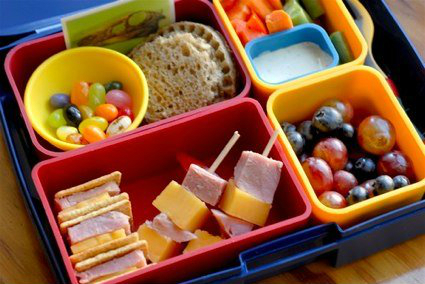During the school year, perhaps the most important meal after a good breakfast for our kids is the mid-day lunch. While a healthy breakfast can help propel them through the morning, lunch helps them maintain focus and energy during the most challenging time of the day – the afternoon. This is when fatigue starts setting in and packing a high carbohydrate meal with processed foods will cause blood sugar levels to drop leading to sleepiness and inattention.
When packing lunches for school, we all face challenges in making sure that what we give our kids is delicious, nutritious and will help get them through the hardest part of their day.
The nightly task of planning the next day’s school lunches can be an added stress at the end of an already long day filled with after school activities, homework, and dinner. It’s a tall order to prepare a meal that’s healthy, tastes great hours after you make it, and appeals to your children.
10 Tips for Packing Healthy School Lunches
Skip processed meats like sliced lunch meats, chicken nuggets, and hot dogs. Processed meats are a leading cause of cancer, especially colon cancer and the intake of processed meats is significantly higher in children as compared to adults. Read this editorial from Dr. Neal Barnard, published in Good Medicine:
- Avoid meats treated with hormones or antibiotics and pack low fat options like turkey and chicken. Try other forms of protein like hummus, nut butters, and whole nuts.
- Pack more fruits and vegetables. Avoid the Dirty Dozen – fruits and vegies with high pesticide residue and go for the Clean 15. Learn what to avoid and what to eat in the Environmental Working Group’s Shoppers Guide to Pesticides in Produce. Rotate items through the week to provide an interesting variety and prevent boredom.
- Avoid foods with artificial food dyes and sweeteners. Many artificial food dyes are petroleum based products (think gasoline and tar L) and are linked to behavioral problems such as ADD/ADHD and mood swings as well as health problems like obesity, asthma and diabetes. Some kids can also have allergic reactions to these artificial food additives.
- Instead of sodas, bottled water or juices, serve water and almond milk in reusable stainless steel bottles to avoid exposure to Bisphenol A, a harmful chemical substance that leaches into food and liquids it comes in contact with.
- Even juices labeled 100% fruit juice area significant source of sugar, so substitute with water to keep them hydrated. Hydration is of vital importance for proper brain functioning as the human brain is approximately 80% water.
- Remember when lunch boxes used to contain a thermos? They are a great way to pack healthy meals such as soup, chili and spaghetti with meat sauce.
- Plan the week’s lunches the weekend before to have all the necessary ingredients on hand. This reduces the chance of your kids walking out the door with a less than optimal lunch.
- Get recipes for healthy school lunches. A great reference book such as Lunch Lessons: Changing the Way We Feed Our Children by Ann Cooper and Lisa M. Holmes can help get the creative juices flowing.
- Get your kids involved in the process of planning and packing lunches. By understanding their preferences, you increase the chance that they will consume their lunch rather than having it end up as waste in the cafeteria trash can.
SOurce: Javani


